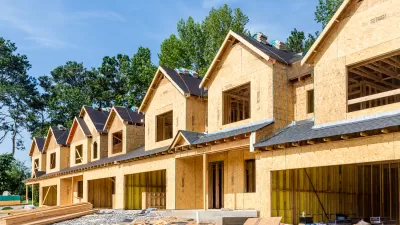A fast food ban enacted in 2008 in an effort to curb obesity, diabetes, and other chronic health issues failed to achieve its well-intentioned goals, according to a new study by the RAND Corporation.
"A Los Angeles ordinance designed to curb obesity in low-income areas by restricting the opening of new fast-food restaurants has failed to reduce fast-food consumption or reduce obesity rates in the targeted neighborhoods," according to a press release announcing a new RAND Corporation study. The study was published online by the journal Social Science & Medicine.
The press release describes the key findings that drive the report's conclusions: "A Los Angeles ordinance designed to curb obesity in low-income areas by restricting the opening of new fast-food restaurants has failed to reduce fast-food consumption or reduce obesity rates in the targeted neighborhoods…"
The press release includes a lot more detail about the study, including one bright spot, from a health perspective: the study found a drop in soft drink consumption, but the drop followed trends in other parts of Los Angeles.
Adrian Florido also reported on the study for KPCC. One conclusion of the study, as explained by Florido, is that "the ban on new fast food restaurants does nothing to increase options for healthier food. Nor does it address another major source of unhealthy food in South L.A.: small convenience stores."
FULL STORY: No Evidence That Los Angeles Fast-Food Curbs Have Improved Diets or Cut Obesity

Pennsylvania Mall Conversion Bill Passes House
If passed, the bill would promote the adaptive reuse of defunct commercial buildings.

Planning for Accessibility: Proximity is More Important than Mobility
Accessibility-based planning minimizes the distance that people must travel to reach desired services and activities. Measured this way, increased density can provide more total benefits than increased speeds.

Fair Housing Cannot Take a Back Seat to ‘Build, Baby, Build’
If we overlook fair housing principles in the plan to build US housing back better, we risk ending up right back where we started.

LA Metro Board Approves New 710 Freeway Plan
The newest plan for the 710 corridor claims it will not displace any residents.

Austin’s Proposed EV Charging Rules Regulate Station Locations, Size
City planners say the new rules would ensure an efficient distribution of charging infrastructure across the city and prevent an overconcentration in residential areas.

Making California State Parks More Climate-Resilient
A recently released report offers recommendations for keeping state parks healthy and robust, including acquiring additional land for conservation and recreation.
City of Costa Mesa
Licking County
Barrett Planning Group LLC
HUD's Office of Policy Development and Research
Mpact Transit + Community
HUD's Office of Policy Development and Research
Tufts University, Department of Urban and Environmental Policy & Planning
City of Universal City TX
ULI Northwest Arkansas
Urban Design for Planners 1: Software Tools
This six-course series explores essential urban design concepts using open source software and equips planners with the tools they need to participate fully in the urban design process.
Planning for Universal Design
Learn the tools for implementing Universal Design in planning regulations.























